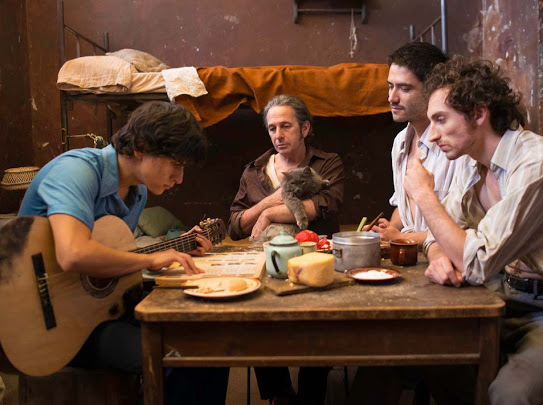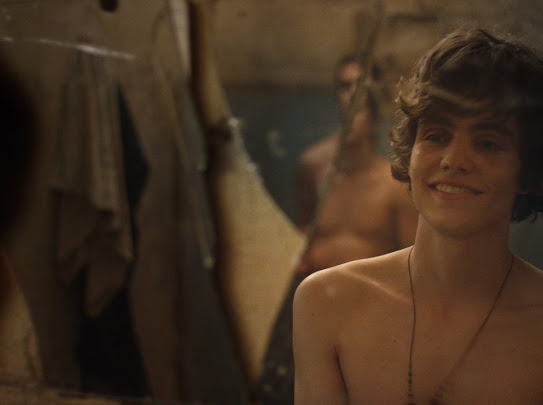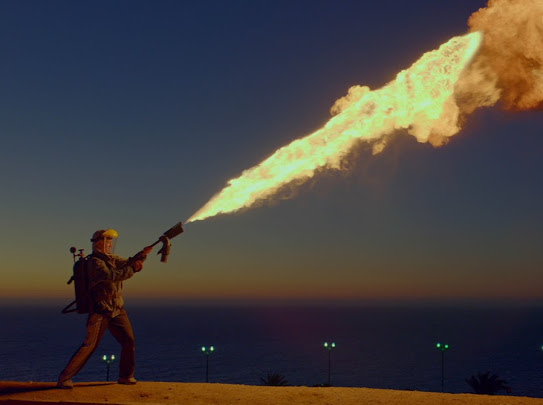The South American continent consistently has been the source of riveting queer drama cinema and two Chilean films in this year’s slate of the Utah Film Center’s 17th annual Damn These Heels Queer Film Festival are worthwhile offerings. They include El Principe (The Prince), an impressive directorial feature-length debut by Sebastián Muñoz, and Ema, directed by Pablo Larraín. Both films are available for virtual streaming for passholders and individual ticket buyers now through July 19.
The Prince
Set in Chile in the early 1970s just as Salvador Allende became the first freely elected Marxist to win the presidency in a representative democracy, this intense homoerotic drama stands out for superb acting and exceptional cinematographic work, especially in the opening third of the film. Muñoz achieves a torrid hybrid that reminds the viewer of strains of the Oz cable series from the 1990s which was set in a maximum security state prison and the 1978 prison drama Midnight Express, which was about a young American who is held and tortured in a Turkish prison on charges of hash possession.

In The Prince, the title character is imprisoned after murdering a young man in a moment of jealous rage. The opening sequence excels at contextualizing all of the familiar elements of a prison drama but the director adds the appropriate lurid and sexual edge that makes the setting pop with visceral sensuality. The restlessness of this all-male prison setting practically leaps off the screen as the viewer is introduced to the cliques and their rival leaders and members. The sexual candor of this film would be difficult to find in a comparable American treatment of such a story.
Initially, the young man is tentative, as his body language and tightly clasped arms suggest. When he asked by a fellow inmate what is his nickname, he mentions that he has none so his cell leader confers ‘The Prince’ as his name. Throughout the film, there are flashback sequences that trace the path of how the young man ultimately landed in such a dangerous penitentiary. However, while the story is easy to follow, the viewer is still left with questions at the end of the film about what really triggered him to commit such a crime and essentially condemn himself to an extended prison sentence in a brutal setting. The generous scenes of frontal male nudity, masturbation and sexual intercourse heighten the ASMR effect but do not offer more distilling insights about character motives or emotions.

In one scene, the older prisoner who has taken the young man under his wings cannot understand why the young man would be satisfied to remain in prison. The older man, who is married to a woman and has family, looks forward to leaving the prison at some point. The plot point is important but the interior mindset behind it could have been expanded.
Nevertheless, the film’s production values and a strong acting cast make it worthwhile for audiences and Muñoz has filled out nicely the contours set in the script’s source material, a nearly obscure pulp novel of the same title by Marco Cruz.

One final note should be made about the excellent music, including a well-known song that is incorporated in the plot: Ansiedad (Anxiety), composed by José Enrique Sarabia in 1955, which is about unfettered romantic passion. Sarabia, who was from Argentina and was just 15 when he wrote the song, composed the music from influences of traditional folk tunes. It is among the world’s most frequently covered pop songs, including a well-known version by the late singer Nat King Cole. Sarabia said in his memoirs that he wrote the song in a time of regret and loneliness, as he was separated from his girlfriend while pursuing his studies in Caracas for training to work in the oil industry. The song also convinced him to dedicate his life to poetry and music. The song became immensely popular across Latin America and its corresponding use in The Prince is right on point.
Ema
Despite some uneven spots in the narrative structure, Ema is a robustly entertaining film with strong acting performance in the story’s two main characters, portrayed by Mariana Di Girolamo and Gael Garcia Bernal, and vivid musical and dance elements. Set in Valparaiso, the film features Di Girolamo as Ema, a reggaeton dancer, and Bernal, who appears regularly in Larraín’s films, as Gastón, her husband and choreographer.

The couple had to give up a boy they adopted, a disastrous experience that has stressed their marriage. The background for this is apparent in the opening minutes of the film. Ema is wielding a flamethrower as she walks down a Valparaiso street in a scene with the traffic signal burning brighter than usual, and the pavement is covered with ashes and the air is filled with smoke. Ema is a captivating pyromaniac fascinated by the force of the flamethrower—it’s like an elephant blasting a stream of water from its trunk or a torrent of semen from a dinosaur, as she describes.
Ema’s character is surreal and absurd and it’s evident that she is not exactly maternal material. She and her husband had to return the boy (Polo) to the adoption agency because the child committed arson. The bitterness between the couple is unfettered and this carries over into their work as professional dancers. Gastón takes his role as choreographer to the extremes of control and Ema flouts him by acting independently, taking to the streets and acting out impulsively through sexual encounters. She is on a mission to correct the adoption failure and Ema is bent on doing whatever it takes—so hence the symbolism of the flamethrower. And as a bonus: who wouldn’t want a dance crew to follow them around the city streets.

Larraín is one of Chile’s foremost film directors and his films attract many of Hollywood’s strongest actors. His 2012 film No, a brilliant political satire, starred Bernal and was nominated for Best Foreign Language Film by The Academy of Motion Picture Arts and Sciences. Other projects have featured Natalie Portman, Greta Gerwig, Julianne Moore and Dane DeHaan. For Ema, Di Girolamo took dancing lessons along with ballet and Pilates training to achieve the look of a professional dancer and her portrayal is convincing. This was Di Girolamo’s debut on the large screen and she is known as one of Chile’s most popular television stars.
The film’s narrative structure weakness likely is due to the fact that the script was being written during production shooting. While the dialogue and the story line do not appear to be improvised, there is a certain impulsive tone that defies nuanced considerations of the story structure. The screenplay is credited to Larraín along with Guillermo Calderón and Alejandro Moreno. At times, it’s like a makeshift synthesis of what one might see if Pedro Almodóvar collaborated with, for example, David Lynch.

However, Larraín’s approach nevertheless achieves an impact that is important in the film. Ema fearlessly steps out of her comfort zone, worrying little about the consequences in her relationship with her controlling husband. The dance sequences are impressive, accompanied by the bristling score by Nicolás Jaar.
Likewise, reggaeton accomplishes the narrative effect that the film promises from its outset and the music beautifully conveys the spirit of a Latin America metropolitan area such as Valparaiso.
